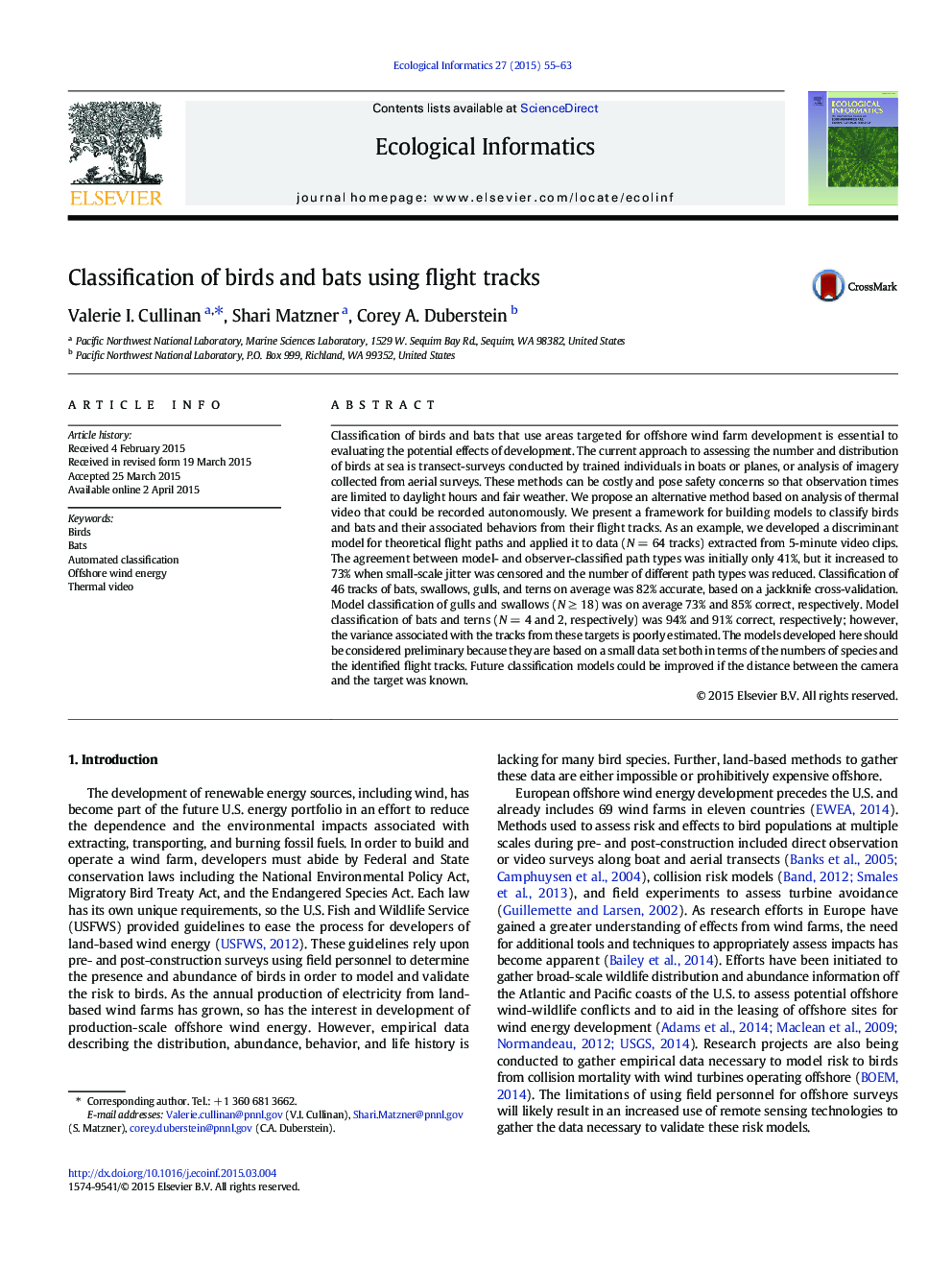| کد مقاله | کد نشریه | سال انتشار | مقاله انگلیسی | نسخه تمام متن |
|---|---|---|---|---|
| 6295940 | 1617206 | 2015 | 9 صفحه PDF | دانلود رایگان |
عنوان انگلیسی مقاله ISI
Classification of birds and bats using flight tracks
ترجمه فارسی عنوان
طبقه بندی پرندگان و خفاش ها با استفاده از قطارهای پرواز
دانلود مقاله + سفارش ترجمه
دانلود مقاله ISI انگلیسی
رایگان برای ایرانیان
کلمات کلیدی
پرنده ها، خفاش ها، طبقه بندی خودکار، انرژی باد ساحلی، ویدئو حرارتی،
موضوعات مرتبط
علوم زیستی و بیوفناوری
علوم کشاورزی و بیولوژیک
بوم شناسی، تکامل، رفتار و سامانه شناسی
چکیده انگلیسی
Classification of birds and bats that use areas targeted for offshore wind farm development is essential to evaluating the potential effects of development. The current approach to assessing the number and distribution of birds at sea is transect-surveys conducted by trained individuals in boats or planes, or analysis of imagery collected from aerial surveys. These methods can be costly and pose safety concerns so that observation times are limited to daylight hours and fair weather. We propose an alternative method based on analysis of thermal video that could be recorded autonomously. We present a framework for building models to classify birds and bats and their associated behaviors from their flight tracks. As an example, we developed a discriminant model for theoretical flight paths and applied it to data (N = 64 tracks) extracted from 5-minute video clips. The agreement between model- and observer-classified path types was initially only 41%, but it increased to 73% when small-scale jitter was censored and the number of different path types was reduced. Classification of 46 tracks of bats, swallows, gulls, and terns on average was 82% accurate, based on a jackknife cross-validation. Model classification of gulls and swallows (N â¥Â 18) was on average 73% and 85% correct, respectively. Model classification of bats and terns (N = 4 and 2, respectively) was 94% and 91% correct, respectively; however, the variance associated with the tracks from these targets is poorly estimated. The models developed here should be considered preliminary because they are based on a small data set both in terms of the numbers of species and the identified flight tracks. Future classification models could be improved if the distance between the camera and the target was known.
ناشر
Database: Elsevier - ScienceDirect (ساینس دایرکت)
Journal: Ecological Informatics - Volume 27, May 2015, Pages 55-63
Journal: Ecological Informatics - Volume 27, May 2015, Pages 55-63
نویسندگان
Valerie I. Cullinan, Shari Matzner, Corey A. Duberstein,
